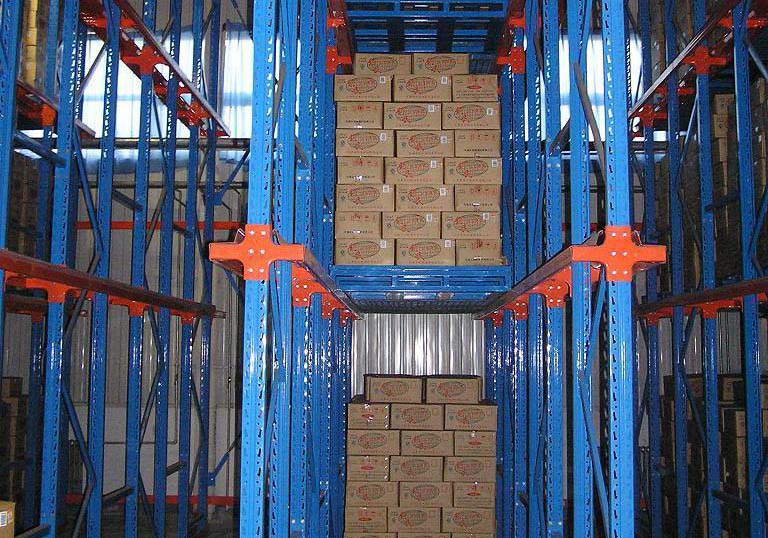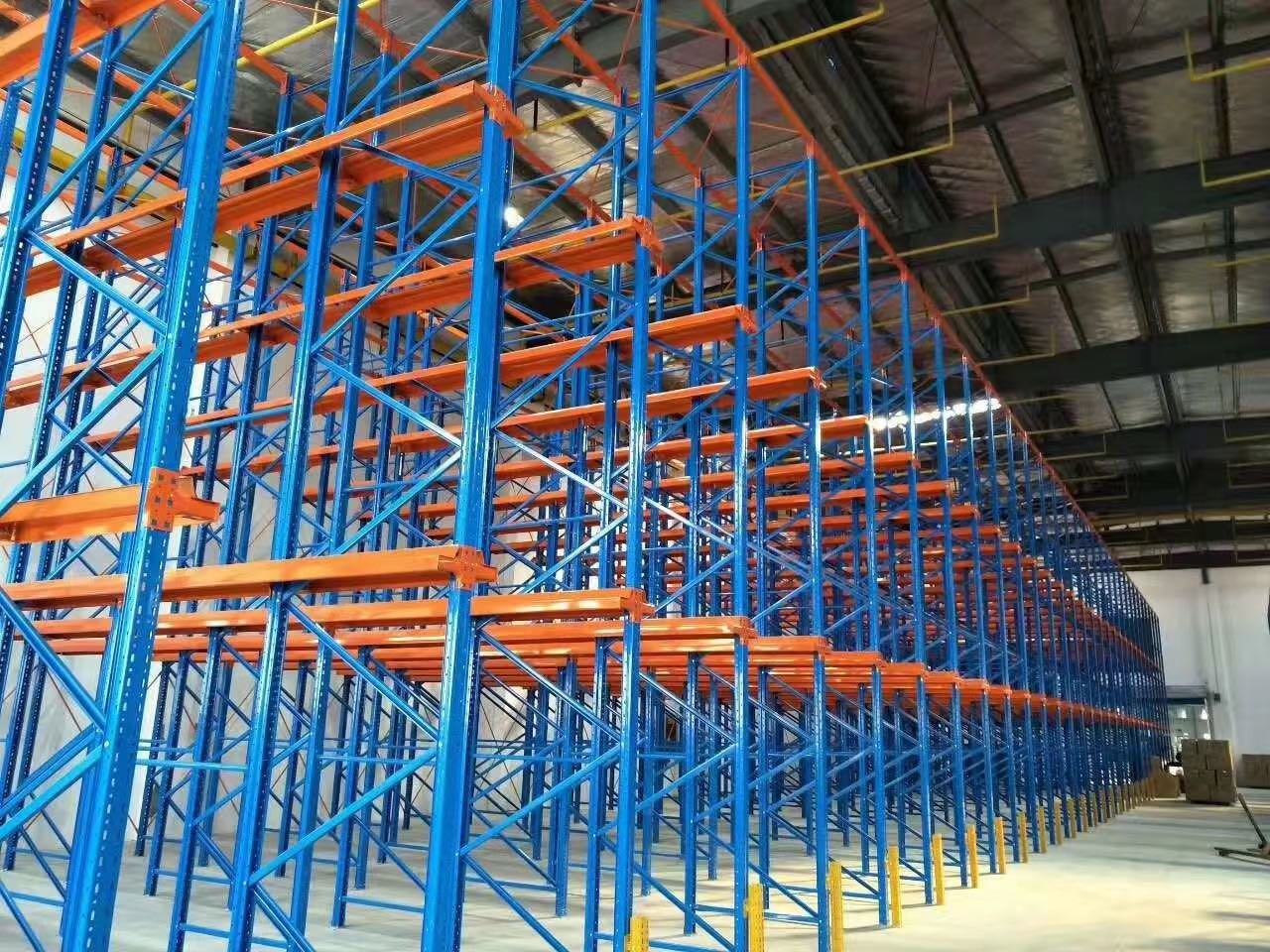Choosing the right drive-through racking system is crucial for warehouse management and logistics efficiency. Different warehouse racking systems are suitable for different scenarios and needs, so multiple factors need to be considered when selecting. Below are some key points to help you make a better decision.
1. First, clarify your storage needs. This includes the type, weight, size, and frequency of access to stored goods. For example, lightweight goods are suitable for light weight racking, while heavy goods require a heavier-duty racking system with a stronger load capacity. Frequently accessed goods may require a more convenient access design, such as flow racking.

The height, width, and layout of the warehouse directly influence the choice of storage racks. If the warehouse is tall, high-bay racking can be selected to maximize vertical space. If space is limited, narrow aisle racking or compact racking may be more suitable. Also, ensure sufficient aisle width to ensure smooth access forklifts and other equipment.
Racking system prices vary significantly. Prioritize the racking type that meets your core needs. Also consider long-term costs, including maintenance costs and potential upgrade needs.
4. Material and Load-Bearing Capacity
Racking is typically made of steel, but the thickness and strength of the steel will affect its load-bearing capacity and durability. Choosing the appropriate material and structure based on the weight of the cargo ensures long-term, stable operation. Surface treatments (such as plastic spraying or galvanizing) can also affect the racking's rust and wear resistance.
Racking installation requires professional staff to ensure structural stability. Some racking systems may require custom installation, requiring a long installation period and advance planning. Routine maintenance includes regular inspections for loose screws, structural deformation, and timely repairs to avoid safety hazards.
As your business grows, your storage needs may change. Choose a scalable racking system to facilitate adding floors or adjusting the layout later. Modular racking designs are generally easier to expand and adjust.
Racking safety is crucial, especially when storing heavy cargo. Ensure that the racking is designed to meet load-bearing requirements and is equipped with safety features such as crash barriers. Operators should receive professional training to prevent accidents caused by improper operation.
Choose a reputable racking supplier to ensure quality and service. You can assess the supplier's expertise by reviewing case studies and reading customer reviews. Sign the contract and specify details such as delivery time, installation services, and after-sales support.

If conditions permit, request samples from the supplier or conduct an on-site inspection of similar cases to gain a firsthand understanding of the racking's stability and suitability. Field testing can help you more accurately determine whether the racking meets your needs.
In summary, selecting a drive-through racking system requires comprehensive consideration of multiple factors, including requirements, space, budget, materials, installation, scalability, safety, and supplier. Through careful planning and selection, you can improve warehouse efficiency and provide strong support for business operations.
 Wechat
Wechat
 Whatsapp
Whatsapp